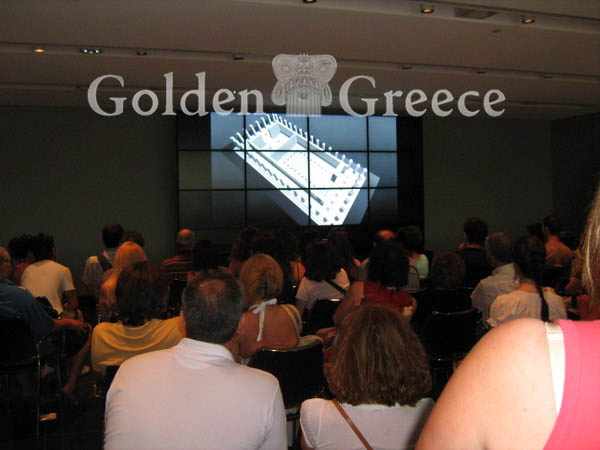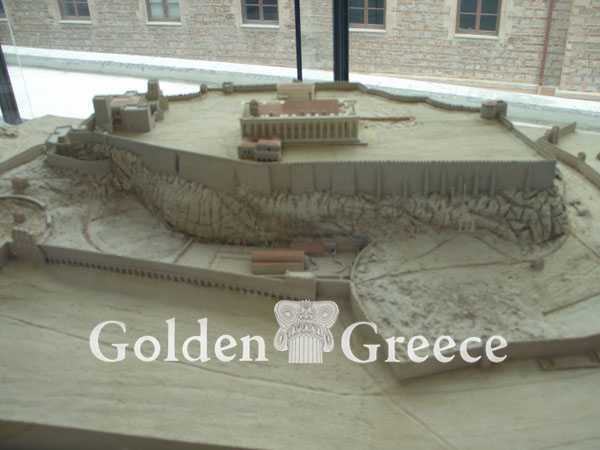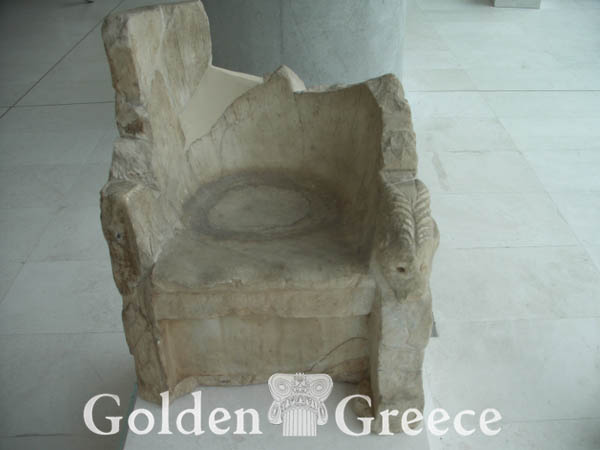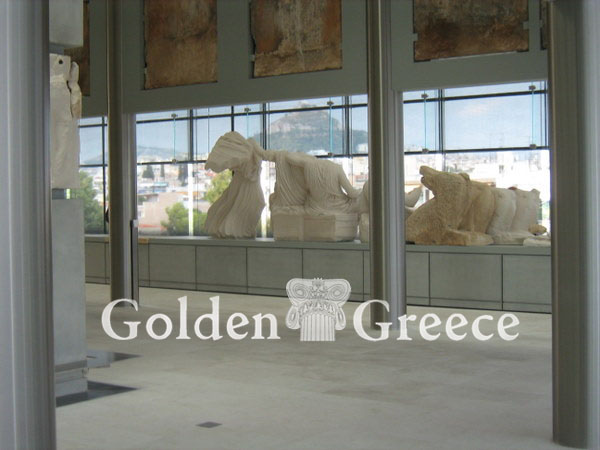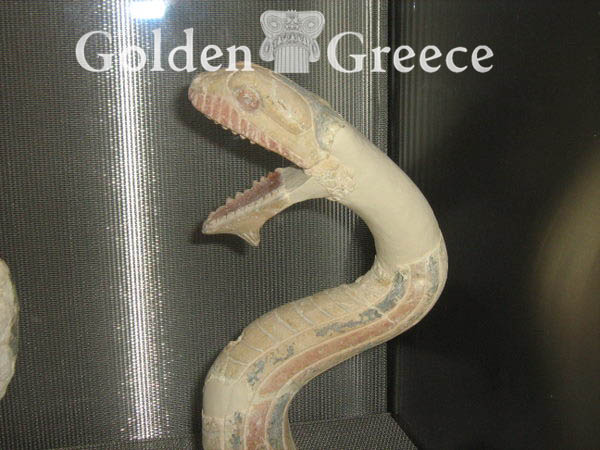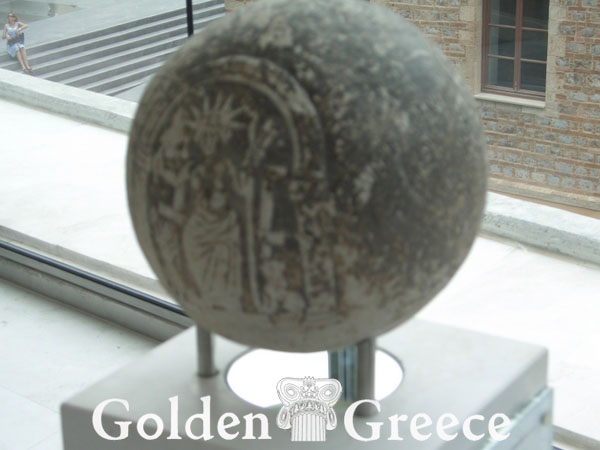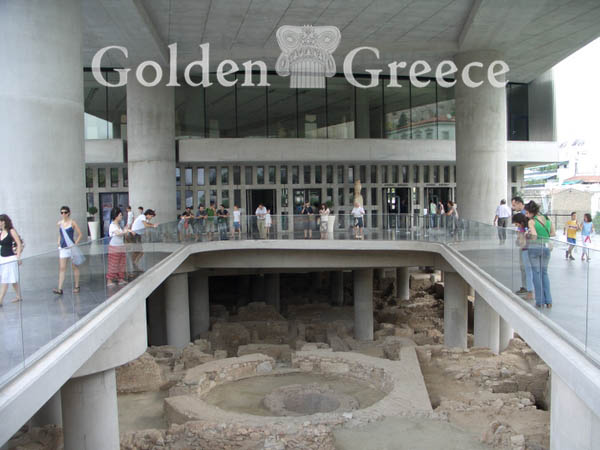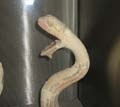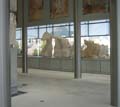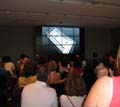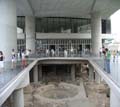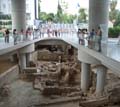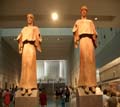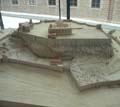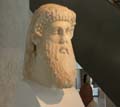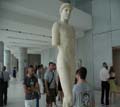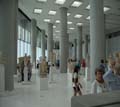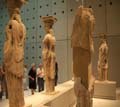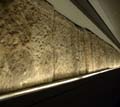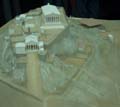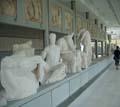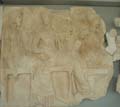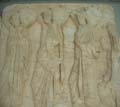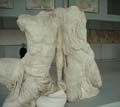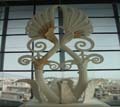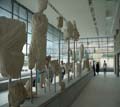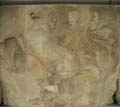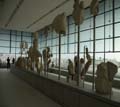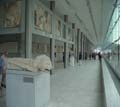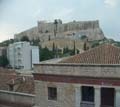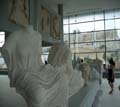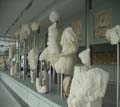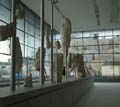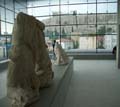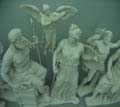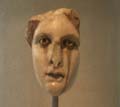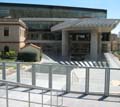
New Acropolis Museum
(15 Dionysiou Areopagitou, Athens 11742 tel. 210 9000900)
The museum visitor, after crossing the vestibule of the ground floor and passing through the ticket cancellation machines, is in front of the first exhibition space of the Acropolis museum. In the spacious hall with the sloping glass floor, finds from the slopes (slopes) of the Acropolis are presented. To the left of the visitor are exhibited findings from the large sanctuaries that were founded on the slopes of the rock, while to his right are findings from the smaller sanctuaries and from the settlement that developed on the slopes of the Acropolis.
The uniquely decorated vases from the sanctuary of the Nymphs, the amphiglyph of Telemachus from the Asklepiion, the theatrical masks from the sanctuary of Dionysos Eleftherios and the treasure of the sanctuary of Urania Aphrodite are just some of the exhibits that give the visitor the possibility of a first, fascinating acquaintance with the ancient sanctuaries and the ceremonies related to them.
The visitor's eye is inevitably drawn to the imposing glass staircase at the end of the hall, at the top of which the large architectural sculptures of the pediment of the Ekatompedos, the first great temple of the goddess Athena on the Acropolis, are displayed. The tour of the first-floor exhibition spaces begins at the northeast corner, where archaeological findings and a scale model reveal the importance of the Acropolis during the Mycenaean Period as a residential area and seat of the local ruler.
The development of the Acropolis into an important religious center is marked by the related findings of the Geometric period. Characteristic is the large disk-shaped bronze plate with Gorgo, which comes from the late-geometric temple of Athena Poliados, and the sculptures of the pediment of Hekatopedos, with lions crushing a bull, Triton and the Three-Faced Demon.
The visitor then passes to the south side of the hall, where the richness and variety of architectural sculptures and free votives, including Daughters, Horsemen and other works, offer a fascinating picture of the Acropolis during the Archaic Period. Near Kores, the Gigantomachia sculptures rise imposingly from the great pediment of the archaic temple (Ancient Temple) of Athena Polias.
In the Hall of Ancient Works the visitor for the first time can admire the exhibits from all sides as they stand freely in the space. The conditions of the spontaneously changing natural light, make it possible to discover the subtle qualitative differences of the sculptures and the high art that created them.
The archaic hall concludes with the reference to the Persian invasion that caused the total destruction of the Acropolis, but also with the works of the so-called Strict Rhythm, which introduces the visitor to the high art of the classical era. Turning his gaze to the hall he leaves behind, the visitor cannot but be impressed by the beautiful view of the archaic works between the columns of the hall, which allude to the architectural landscape of the Holy Rock.
Then the visitor can go up to the second floor of the museum, where there is a restaurant. Ascent is by stairs, escalators or elevators. From the interior balconies of the second floor open to the public, a panoramic view of the Hall of Archaic Works and the Hall of Shrouds is provided. From there, in the same way, the visitor is led to the atrium of the Parthenon Hall.
In the core of the Parthenon hall, the visitor has the opportunity to watch a video presentation on the subject of the Parthenon and its sculptural decoration. In the same area are exhibited ancient inscriptions that provide detailed records of the construction of the Parthenon and the statue of Athena Parthenos. Through them one can derive information and thus feel the way the democratic institutions of the city functioned during the 5th BC. century. The integration of the frieze of Parthenon on the rectangular concrete core of the museum, which has the same dimensions with the Parthenon nave, the placement of the metopes between the columns, the development of forms of two pediments of the temple and the union of the original sculptures with copies those found in the British Museum, gives the opportunity to the visitor to enjoy, for the first time, whole the sculptural decoration of the Parthenon and understand the images that they are depicted on it.
The visitor then returns to the first floor. On the west and north side of the hall you can enjoy unique works, which were copied as originals by later artists from antiquity to modern times. For the first time, he can admire close-up panels of the ceiling of the Propylaea, the sculptures of the frieze and chest of the Temple of Athena Nike, the sculptures of the friezes of the Erechtheion and of course the famous Caryatids of the same temple. The exhibition ends on the north side of the hall. Original works, resolutions and honorary reliefs, Roman copies of classic masterpieces, impressive Portraits of famous persons, priests and philosophers cover the period from in the 5th century BC to the 5th century AD. The visitor then descends from the imposing staircase, crosses anew the Hall of the Slopes and ends at the exit of the museum.
In a few months the museum will have another exhibition space, which visitors can include in their tour. It is the archaeological site that was excavated at the site of the construction of the New Acropolis Museum and extends to the base of the museum. When the preservation of the architectural remains of the excavation is completed and the metal walkways are installed, visitors will be able to walk among or rather over the ruins of the ancient quarter. With the help of observational material they will be able to understand the living conditions in the ancient quarter and connect the masterpieces exhibited on the floors of the museum with the findings of the daily life of the people who lived in the shadow of the Acropolis during different historical periods.
Visitors to the museum enjoy a wide range of services, including the museum shops, the cafe on the ground floor and the restaurant on the second floor that offers a panoramic view of the Acropolis. A periodical exhibition hall, an auditorium and a virtual reality theater provide the visitor with a high-level experience.
More: New Acropolis Museum
Editor: Fotini Anastasopoulou
